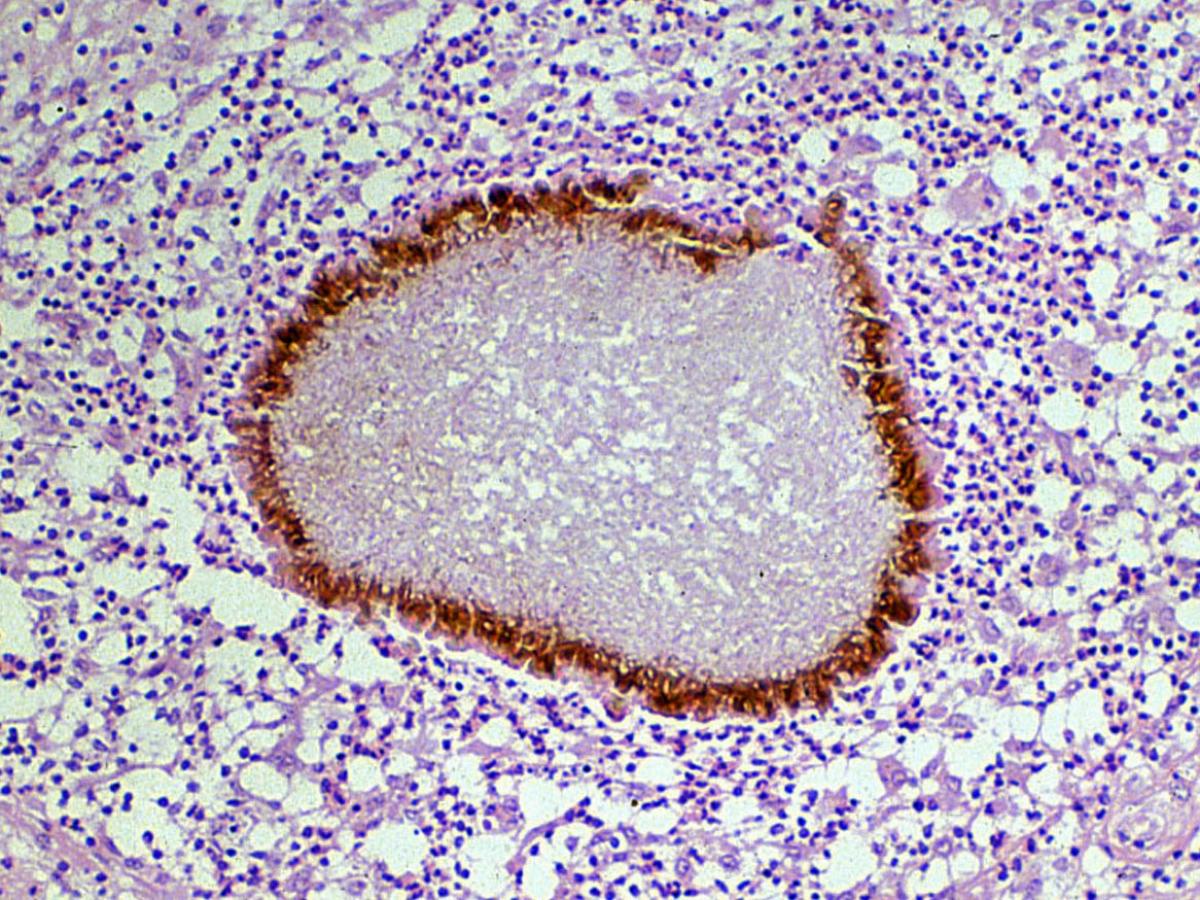Status message
Correct! Excellent, you have really done well. Please find additional information below.
Unknown 26 = Madurella mycetomatis
Direct microscopy (H&E): H&E stained tissue section showing blacked grained eumycotic mycetoma caused by Madurella mycetomatis.

Culture: Culture of Madurella mycetomatis showing the typical brown diffusable pigment in the agar.
Colonies are slow growing, flat and leathery at first, white to yellow to yellowish-brown, becoming brownish, folded and heaped with age and the formation of aerial mycelia. A brown diffusable pigment is characteristically produced in primary cultures.

Microscopy: Phialides of M. mycetomatis (rarely seen as most isolates are sterile). Although most cultures are sterile, two types of conidiation have been observed, the first being flask-shaped phialides that bear rounded conidia, the second being simple or branched conidiophores bearing pyriform conidia with truncated bases. The optimum temperature for growth of this mould is 37C.

Key Features: Black grain mycetoma, growth at 37C, diffusable brown pigment produced on culture and the occasional presence of phialides.
Comment: The genus Madurella is based on tissue morphology (mycetoma with black grains) and the formation of sterile cultures on mycological media and is in need of revision. Both M. mycetomatis and Trematosphaeria grisea have been isolated from soil and are one of the major causative agents of mycetoma. BSL-2 organism.
About Madurella Back to virtual assessment



